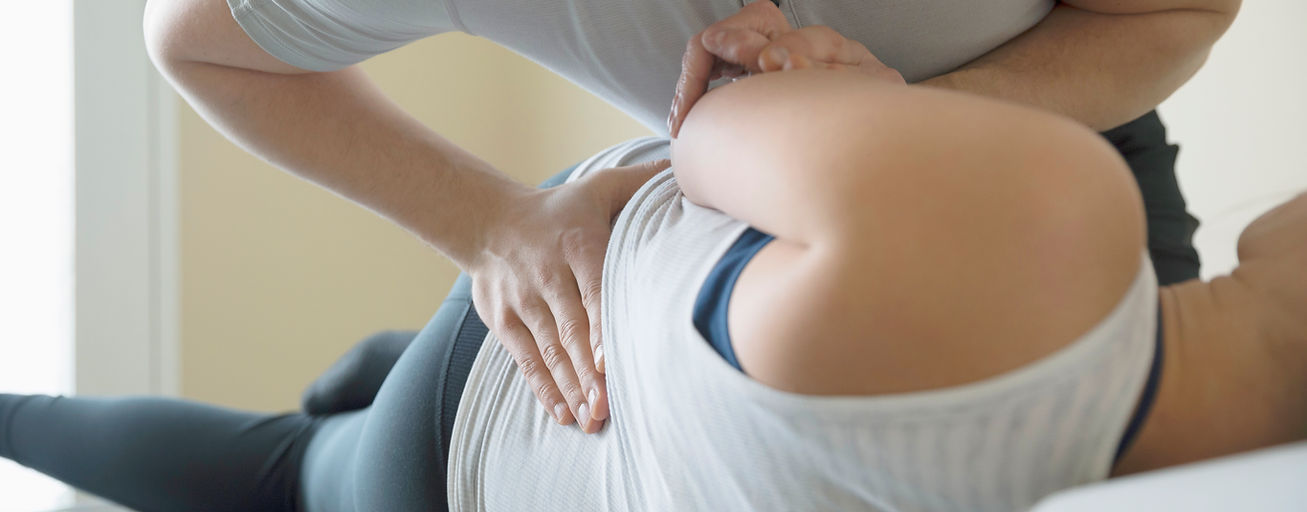
MUSCULAR BACK PAIN (LOW BACK SPASM / BACK TIGHTNESS)
Muscular back pain (or pulled back muscle, back muscle spasm or back muscle strain) is the most common source of back pain experienced. Fortunately, it is the fastest recovering type of back pain to rehabilitate.
CAUSES OF MUSCULAR BACK PAIN
Back pain is typically reduced to being caused by: muscular (strain or fatigue), ligamentous (strain or tear) or joint (sprain or dysfunction) related issues, which is all commonly perceived & felt as ‘muscle back pain’.
The mechanisms which can onset all of these causes include: muscle fatigue, excessive use/overloading the back or poor lifting postures.
SYMPTOMS OF MUSCULAR LOW BACK PAIN
Muscle back pain can be either chronic (slow onset) or acute (sudden), generally ranging from mild aching to severe pain. The symptoms associated with general back muscle pain include:
-
Specific localised pain, usually either side or in the middle of the lower back.
-
Tenderness at the site of the back pain (touching the muscles, joints or bones of the lower back in the area of pain can be sore).
-
Sensation of back stiffness or tightness, which may be accompanied with ‘clicking’.
-
Muscle twitching or spasms.

SO WHAT WILL MAKE THE PAIN BETTER?
Easing factors usually include rest, changing the position of your body (such as adjusting your back when driving), bending/rotating your spine or walking.
With this type of back pain, movement is key.
MUSCLE STRAINS
Being understood as the more simple and common type of back pain, muscle fatigue, an overuse/overloading trauma, or poor lifting positions & sitting postures are the more typical mechanisms for sustaining a lower back muscle strain.
These strains can occur due to: poor spinal flexibility & mobility (decreased muscle and joint ranges of motion) and/or a lack of spinal strength & endurance, which can subsequently lead to either an acute (sudden) or chronic (slow onset) back strain.
An example of an acute lower back muscle strain could be lifting a heavy bag of groceries too quickly and without correct technique.
An example of more chronic lower back muscle strains could include your poor posture when sitting at work for 8 hours of the day. This can cause the spinal muscles to fatigue or overstretch. This can also put excess strain on the spinal joints, ligaments & nerves = PAIN!
LIGAMENT SPRAINS
There are ligaments all over the body to limit the amount of movement between joints (prevents over stretching). Specifically with the lower back, the ligaments help to do exactly this with the spinal joints and vertebrae. When they stretch too far, or too quickly, a ligament strain or tear may occur. They can cause the body to go into a protective state and spasm & tighten the surrounding muscles, resulting in back muscle pain.
They can be caused by heavy weight lifting sports, or vehicle accidents (such as a whiplash type injury). Performing stability and progressive strengthening exercises in the area of the strain/tear can help to improve the ligament’s integrity. For a simple ligament strain of the lower back, healing time can take up to 4 or more weeks if treated well.

HOW LONG DOES IT LAST FOR?
Well, this depends on the severity and cause of your back pain. If you are experiencing a simpler type of back muscle pain (e.g: poor posture causing muscle fatigue), this can improve within 2~3 weeks if managed correctly. However, if you experience a joint sprain or ligament strain, this can take 4 or more weeks to recover.
Seeking professional Physiotherapy help for your back pain is recommended, as the key is early intervention to prevent the progression of back muscle pain. Your Physiotherapist will initially assess your spinal movements to ascertain whether there is a joint, ligament or musculature restriction which is causing your pain. Once identified, the clinician will then use a combination of soft tissue therapy and joint mobilisation to improve the overall movement of the affected area to decrease your symptoms.
From here, you will be sent home with a personalised exercise program consisting of both flexibility & strengthening exercises to ensure that you improve the resilience & health of your back, with the aim of limiting future occurrences!
If you are unable to attend our clinic in person, check out one of our popular low back pain programs which has proven to be extremely effective at treating lower back pain. We even do online consults to help diagnose your condition for you as well as guide you through the process.